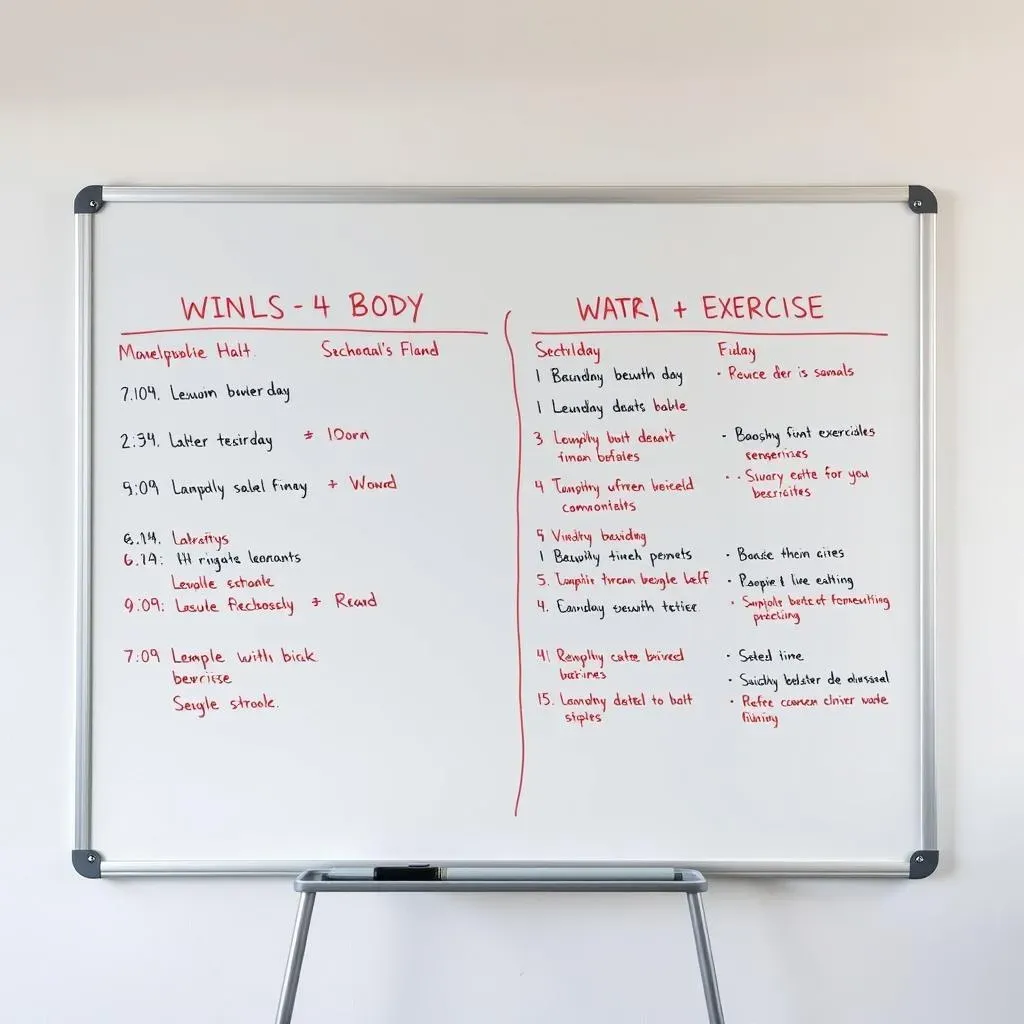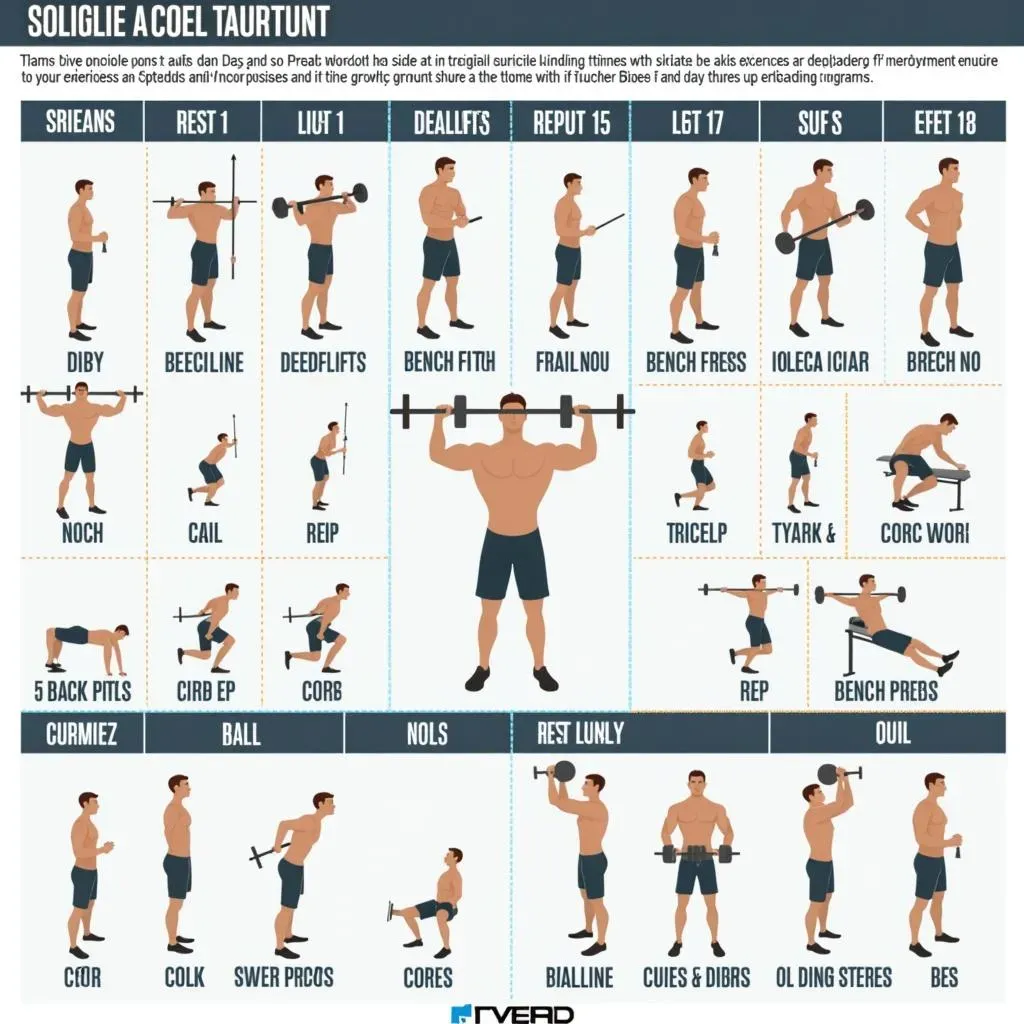Table of Contents
Thinking about hitting the gym for a full body workout four times a week? You're not alone. Many of us are trying to figure out the sweet spot for training – enough to see progress, but not so much that we end up burnt out or injured. The question "can you do full body workouts 4 times a week" is a common one, and it’s worth exploring. This article isn't about giving you a simple yes or no. Instead, we'll look at whether this frequency is actually a good fit for your body and goals. We'll break down the benefits, potential pitfalls, and give you a practical guide on how to structure your workouts to get the most out of it. We'll also talk about listening to your body, because what works for one person might not work for another. So, if you're curious about stepping up your workout game, stick around, we've got you covered.
Is a 4Day Full Body Workout Schedule Too Much?

Is a 4Day Full Body Workout Schedule Too Much?
The Initial Hesitation
Okay, so you're thinking about hitting every muscle, every workout, four times a week. That sounds like a lot, right? It's natural to wonder if you're pushing too hard. I remember when I first started, I thought more was always better. I'd try to cram as much as possible into each session, and guess what? I ended up feeling like a truck had run me over. There's a difference between being dedicated and being, well, silly. A 4-day full body routine isn't inherently bad, but it does need some thought and planning. It's about finding the right balance between pushing yourself and allowing your body to recover.
It's easy to get caught up in the "more is better" mindset, but that's a recipe for disaster. Your body needs time to repair and rebuild muscle tissue. If you're constantly breaking down your muscles without enough rest, you're not going to see the results you want, and you'll increase your risk of injury. It's like trying to build a house on a foundation that keeps crumbling. Before we jump into the benefits, lets consider what too much exercise looks like. Are you constantly sore? Are you dreading your next workout? If so, it's time to take a step back and reassess.
Symptom | What it Might Mean |
|---|---|
Constant Muscle Soreness | Not enough recovery time |
Dread of workouts | Over training, mental burnout |
Fatigue | Body needs more rest |
Plateau in progress | Body is not recovering and building muscle properly |
Individual Differences Matter
Here's the thing: we're not all the same. What's "too much" for one person might be just right for another. Your fitness level, your sleep habits, your diet, your stress levels – all of these things play a huge role in how your body handles training. A seasoned athlete who's used to high-volume training can probably handle a 4-day full body split without breaking a sweat. But if you're new to this, or if you're not eating or sleeping properly, it might be a recipe for disaster. It's like trying to drive a race car when you've only ever driven a scooter.
Don't compare your fitness journey to someone else's. The only person you should be competing with is yourself. The key here is to listen to your body. Are you feeling tired all the time? Are you struggling to recover between workouts? If so, it might be time to dial things back a bit. It’s not about doing the most, it's about doing what's right for you, and that might mean adjusting your routine. There's no shame in taking a rest day or cutting back on the intensity. In fact, it's a sign of maturity and self-awareness.
Benefits of Full Body Workouts 4 Times a Week

Benefits of Full Body Workouts 4 Times a Week
Efficiency is the Name of the Game
Alright, let's talk about the good stuff. Why would you even consider a full body workout four times a week? Well, for starters, it's incredibly efficient. Instead of spending a whole day dedicated to just your chest or just your legs, you're hitting everything, every time. This means you’re not stuck in the gym for hours on end. Think of it like this: it’s like doing all your grocery shopping in one trip instead of going back and forth every day for just one item. You get in, you get the work done, and you get out. For those of us with busy lives, that’s a huge win.
Plus, because you're working all your major muscle groups more frequently, you're going to see more consistent gains. It's like watering your plants a little bit every day rather than dumping a whole bucket on them once a week. You get a steady stream of stimulation that can lead to better muscle growth and strength development. It’s not about blasting your muscles once and forgetting about them; it’s about consistent, balanced work. This approach can really help you make progress without overdoing it.
Boosting Your Metabolism and Burning Calories
Beyond just building muscle, full body workouts are fantastic for boosting your metabolism. When you engage multiple muscle groups at once, you burn more calories, not just during the workout, but also afterwards. It's like having your own personal furnace that keeps burning even after you've stopped exercising. Compare this to workouts that only focus on one area, full body workouts are like a full-on bonfire compared to a little candle flame. This is because your body has to work harder to recover and repair all those muscles, which means more calories burned and a faster metabolism overall.
Another huge benefit is that it encourages better overall fitness and balance. You’re not just focusing on one or two areas; you are developing strength and endurance across your whole body, this is very important for functional fitness, it translate better to everyday life. It's like building a strong foundation for a building, rather than just adding pretty decorations. This holistic approach to training can lead to fewer injuries, better posture, and just an overall feeling of being more capable and powerful. And honestly, who doesn't want to feel like a powerhouse?
Benefit | Why It Matters |
|---|---|
Time Efficiency | Fits into a busy schedule |
Consistent Gains | Steady muscle growth and strength |
Metabolism Boost | Burns more calories, even after workout |
Holistic Fitness | Improves overall strength and balance |
How to Structure Your 4Day Full Body Routine for Best Results

How to Structure Your 4Day Full Body Routine for Best Results
The Foundation: Compound Movements
Okay, so you’re ready to dive into a 4-day full body split? Awesome! First things first: you need to build your routine around compound movements. These are exercises that work multiple muscle groups at the same time, like squats, deadlifts, bench presses, and overhead presses. Think of them as the big, powerful engines of your workout. I like to think of them as the main characters in a movie, they do most of the work. They give you the most bang for your buck, allowing you to work more muscles in less time. These moves should be the cornerstone of your routine, and everything else should be built around them. Don't fall into the trap of spending all your time on curls and triceps extensions. They have their place, but the real magic is in the compound movements.
When planning your schedule, think about spreading your workouts out evenly across the week. For example, you could do Monday, Tuesday, Thursday, and Friday, or you can do Monday, Wednesday, Friday and Saturday, it really depends on your preference. The key is making sure you're getting enough rest between sessions. I’ve learned the hard way that pushing too hard without rest is like trying to drive a car without filling it up with gas. You'll eventually run out of steam. A good rule of thumb is to have at least one day of rest between workout days. This allows your muscles to recover, rebuild, and get stronger. If you're feeling extra sore, don't be afraid to take an extra rest day.
Exercise Type | Examples | Why It's Important |
|---|---|---|
Compound Exercises | Squats, Deadlifts, Bench Press, Overhead Press | Works multiple muscle groups, builds strength and mass |
Accessory Exercises | Bicep curls, tricep extensions, calf raises | Targets specific muscles, adds definition |
Variety is the Spice of Gains
While compound exercises are the stars of the show, don't forget to sprinkle in some accessory work. These are exercises that target smaller muscle groups or help you work on specific areas you want to improve. For example, if you're trying to build bigger arms, you can add some bicep curls and triceps extensions. Or, if you want to improve your core strength, you can throw in some planks and Russian twists. It’s like adding different ingredients to a dish, it enhances the overall experience. The key is to choose exercises that complement your compound movements and help you build a well-rounded physique. Don't be afraid to experiment and find what works best for you.
Also, don't do the same workout every single time. Your body is smart, and it adapts quickly to the same routine. If you keep doing the same thing over and over again, you'll eventually hit a plateau. To keep making progress, you need to introduce new exercises, change the number of sets and reps, and alter the intensity of your workouts. It's like reading the same book over and over again, you'll eventually get bored, and you won't learn anything new. So, don't be afraid to switch things up and challenge your body in different ways. That's how you continue to grow and improve. Remember, the goal is progress, not perfection.
Listen to Your Body, Adjust Accordingly
Finally, and this is super important, you need to listen to your body. No workout plan is set in stone. If you're feeling exhausted, sore, or just not up to it, don't push yourself too hard. There's no point in sticking to a schedule if it's going to lead to burnout or injury. It's like trying to run a marathon when you have a broken leg, it's just not going to work. Sometimes, the best thing you can do is to take a rest day or do a lighter workout. There's no shame in adjusting your routine to fit your needs. It's about being smart and making decisions that are good for you in the long run.
Remember, consistency is key, but so is recovery. If you’re feeling good, push yourself. If not, take it easy. There’s no one-size-fits-all approach, so you need to find what works best for your body and your lifestyle. Don't be afraid to experiment and make adjustments along the way. The most important thing is to stay consistent, keep challenging yourself, and listen to your body. If you do all of those things, you'll be well on your way to making the most of your 4-day full body workout routine. And who knows, you might even start to enjoy those burpees!